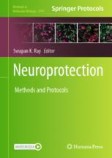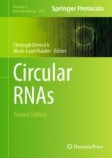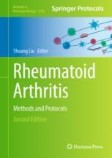Search
Search Results
-
Targeted Modification of Epigenetic Marks Using CRISPR/dCas9-SunTag-Based Modular Epigenetic Toolkit
The epigenome, consisting of chemical modifications to DNA and histone proteins, can alter gene expression. Clustered regularly interspaced short...
-
Fabrication and Characterization of Mucin Nanoparticles for Drug Delivery Applications
Mucin glycoproteins are ideal biomacromolecules for drug delivery applications since they naturally offer a plethora of different functional groups...
-
Preparation of Soluble Mucin Solutions from the Salivary Glands
Studying salivary gland mucins is important for elucidating the pathogenesis of salivary gland diseases, including tumors and xerostomia, and...
-
3D Breast Cancer Model on Silk Fibroin–Integrated Microfluidic Chips
To imitate in vivo environment of cells, microfluidics offer controllable fashions at micro-scale and enable regulate flow-related parameters...
-
Renal Organoids from Whole Kidney Cells
Organoid technology, as a three-dimensional (3D) culture method, provides a feasible tool to self-organize multiple types of organ-specific cells,...
-
Embedded 3D Bioprinting for Engineering Miniaturized In Vitro Tumor Models
Embedded extrusion 3D bioprinting is a rapidly emerging additive manufacturing methodology that provides a precise spatial deposition of synthetic or...
-
Quantitation of Mucin by Densitometry of an Alcian Blue-Stained Membrane
It is a challenging task to quantify mucin using conventional protein quantification methods due to the large number of glycans attached to the...
-
Supported Molecular Matrix Electrophoresis
Distinct bands of mucins cannot be banded using a gel electrophoresis based on a molecular sieving effect due to their very large molecular weight...
-
Real-Time Cell Cycle Imaging in a 3D Cell Culture Model of Melanoma, Quantitative Analysis, Optical Clearing, and Mathematical Modeling
Aberrant cell cycle progression is a hallmark of solid tumors. Therefore, cell cycle analysis is an invaluable technique to study cancer cell...
-
Screening and Characterization of Functional circRNAs in Neuronal Cultures
This chapter describes a methodology for the screening and characterization of functional circRNAs, particularly in the context of neural circuit...
-
In Vivo Tissue-Specific Knockdown of circRNAs Using shRNAs in Drosophila melanogaster
Studying circular RNAs’ function in vivo has been challenging due to the lack of generic tools to manipulate their levels without affecting their...
-
Mechanical Characterization of Mucus on Intestinal Tissues by Atomic Force Microscopy
Mucus is part of the innate immune system that defends the mucosa against microbiota and other infectious threats. The mechanical characteristics of...
-
Evaluation of Autoreactive Responses
Loss of tolerance to self-antigens is considered to be one of the initial reasons for the onset of rheumatoid arthritis (RA). Identification of...
-
Reconstruction of Protein/Liposome Complex
Most ion channels and receptors are distributed in cell membranes and are known as membrane proteins. These membrane proteins are folded in the cell...
-
Institutional Review Board Considerations for Clinical Trials
To protect subjects who participate in human research, Institutional Review Boards (IRBs) play an important role in reviewing research and...
-
Production of Neutralizing Antibody
Techniques employing monoclonal antibodies (mAbs) are widely used in the initial development phase of biologics. The usefulness of mAbs in basic RA...
-
A Decision Tree to Guide Human and Mouse Mammary Organoid Model Selection
Over the past 50 years, researchers from the mammary gland field have launched a collection of distinctive 3D cell culture systems to study multiple...
-
Preparation of Joint Extracts
Since mice are widely used to establish rheumatoid arthritis models, assessment of the pathogenesis of local arthritis is fundamental. Proteins are...
-
Native Circular RNA Pulldown Method to Simultaneously Profile RNA and Protein Interactions
Circular RNAs (circRNAs) are a widespread, cell-, tissue-, and disease-specific class of largely non-coding RNA transcripts. These single-stranded,...
-
Assessment of Disease Activity, Structural Damage, and Function in Rheumatoid Arthritis
The primary goal in the treatment of rheumatoid arthritis (RA) is to control disease activity, prevent structural damage in joints, and normalize...
